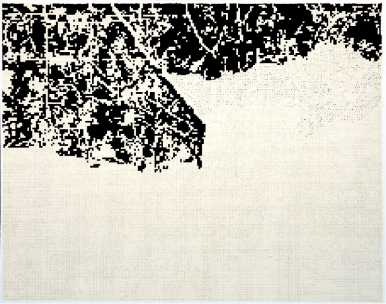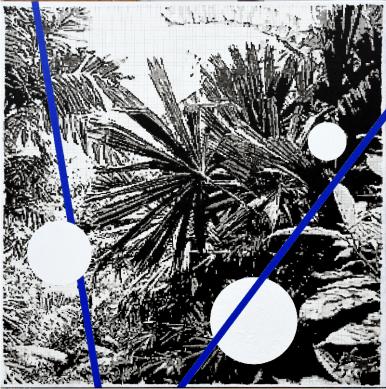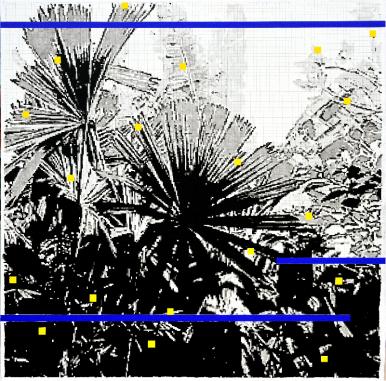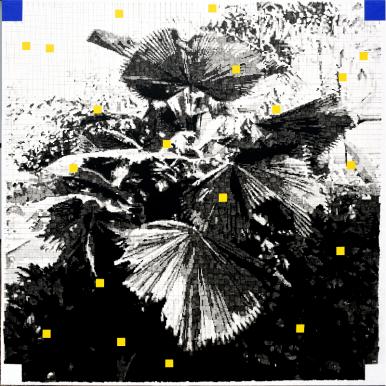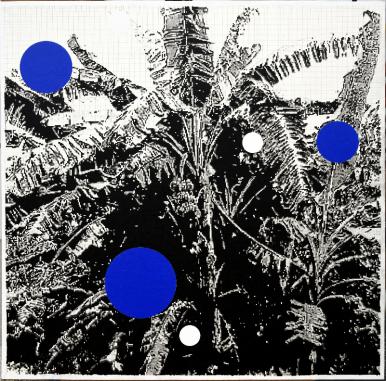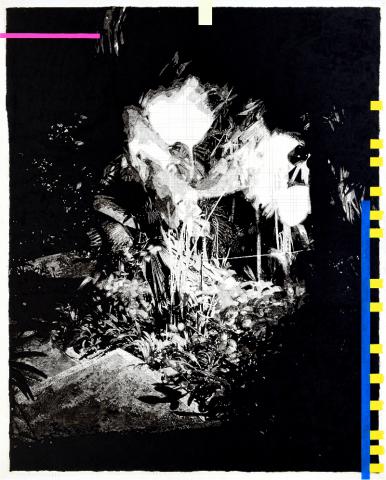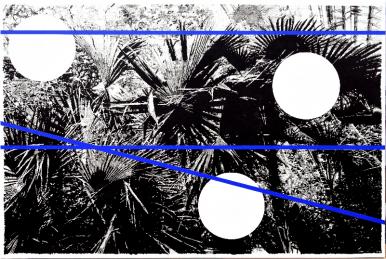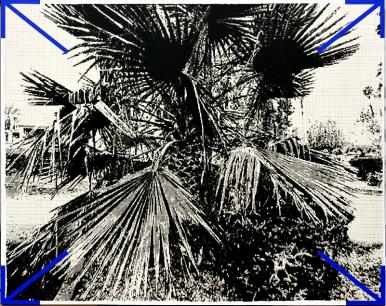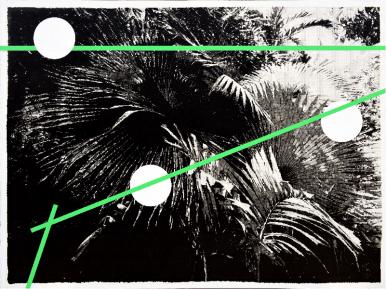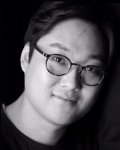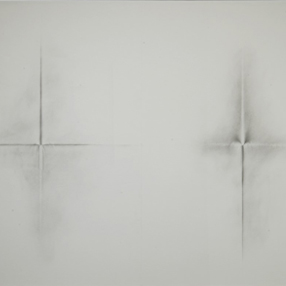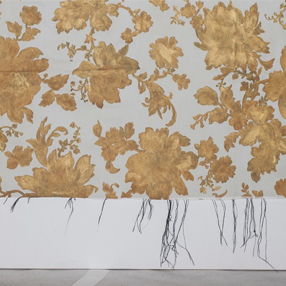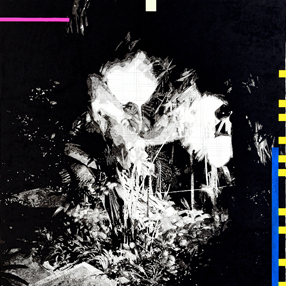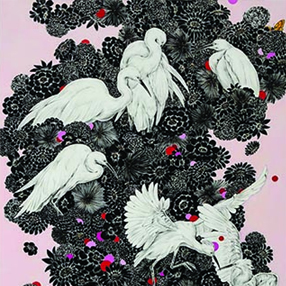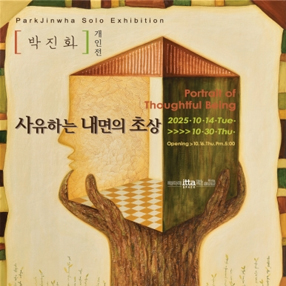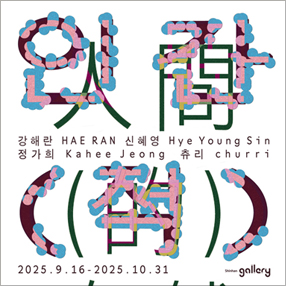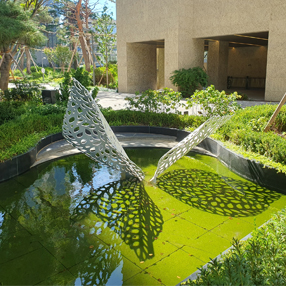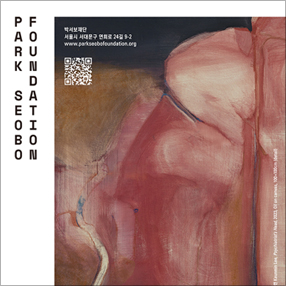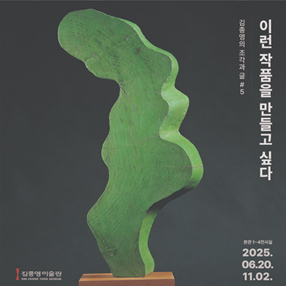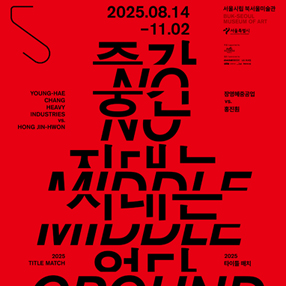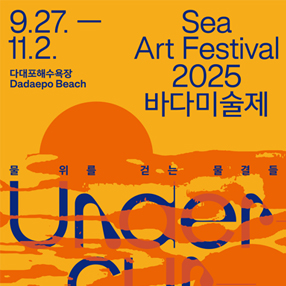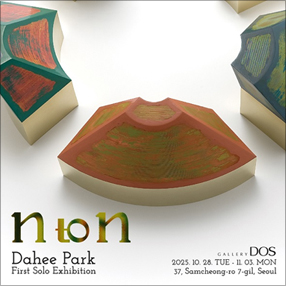본문
-
장재록
Another Act 227.3x181.8cm, Korean ink & Acrylic on Korean Paper Attached to Canvas, 2019
-
장재록
Another Place-Forest 120x120cm, Korean ink & Acrylic on Korean Paper Attached to Canvas, 2019
-
장재록
Another Place-Forest 120x120cm, Korean ink & Acrylic on Korean Paper Attached to Canvas, 2019
-
장재록
Another Place-Forest 145x145cm, Korean ink & Acrylic on Korean Paper Attached to Canvas, 2019
-
장재록
Another Place-Forest 145x145cm, Korean ink & Acrylic on Korean Paper Attached to Canvas, 2019
-
장재록
Another Place-Forest 162.2x130.3cm, Korean ink & Acrylic on Korean Paper Attached to Canvas, 2016
-
장재록
Another Place-Forest 193.9x130.3cm, Korean ink & Acrylic on Korean Paper Attached to Canvas, 2018
-
장재록
Another Place-Forest 227.3x181.8cm, Korean ink & Acrylic on Korean Paper Attached to Canvas, 2019
-
장재록
Another Place-Forest 259.1x193.9cm, Korean ink & Acrylic on Korean Paper Attached to Canvas, 2018
-
Press Release
표면과 내면 사이에서 몰입하기
장재록은 우리 주변에서 발견되는 특정한 대상을 통해 현대 사회의 욕망하는 풍경을 담아왔다. 「Another Landscape」시리즈에서는 반짝이는 외관을 가진 자동차와 그 표면에 비친 도시 풍경, 화려한 샹들리에들을 통해 드러나는 현대인의 욕망들을 표현하거나 「Another Place」에서는 도시에서 쉽게 볼 수 있는 건축구조물들과 자연을 그려냄으로써 다양한 도시의 감각, 다시 말해 그곳을 터전으로 살아가는 우리들의 삶의 본질을 표현하는 것에 집중하여 왔다. 그런데 최근의 작업인 「Another Act」시리즈는 지금까지 해오고 있는 것과는 다른 몇 가지 변화되는 지점들이 발견되고 있다. 따라서 이번 신작들을 이전 작업들과 비교해보면서 그 변화를 살펴본다면, 자연스럽게 그의 작업 세계를 이해할 수 있을 것이다.
첫 번째는 작업의 표면에 대한 접근의 변화이다. 이전의 그의 작업들은 모두 어떤 대상을 표현하는 것에 집중하였다. 여기에는 주된 대상이 명확하게 포착되어 고정적으로 나타나며, 이렇게 선택된 것들은 작가에 의해 하나의 대상으로 완벽하게 재현되는 세계를 구축해 나갔다. 예를 들면 「Another Landscape」의 자동차들에서는 두 개의 표면이 아이러니하게 공존하고 있다. 자동차의 번쩍이는 표면은 그 자체로 욕망의 대상이지만 그것이 표면에 드러나는 것은 차의 표면에 의해 굴절되어 비추어진 왜곡된 도시의 풍경으로도 나타난다. 이러한 하나이자 두 개의 표면에 대한 표현은 우리 삶의 양가적인 의미를 동시에 드러내는 작가가 바라보는 주된 대상이다. 따라서 작가에게 어떤 대상의 표면은 중요한 소재이며, 이를 재현해나가면서 획득되는 새로운 회화적 표면을 통해 그가 삶에서 인식하는 내밀한 의미들을 포착해 나가는 방식이었다. 한편으로 이렇게 대상의 표면과 작가 자신의 내면의 관계성을 연관 짓는 방식은 다양한 색을 사용하지 않고 먹의 농담(濃淡)만으로 반짝이는 이중적인 표면들을 효과적으로 표현하기 위한 방법이었을 것이다. 그런데 이후의 「Another Place」에서는 반짝이는 표면을 가진 것을 소재로 사용하는 것이 아니라 원래의 환경에 존재하는 것이 아닌 도시, 공원, 식물원에서 발견할 수 있는 열대의 식물이나 지극히 즉물적이고 도시적인 풍경을 소재로 사용하였다. 여기서부터 작가의 변화된 방식들이 시작된다. 일단 작가는 그림을 그리기 전에 화면에 수평과 수직의 그리드로 먼저 구획한 정형화된 틀을 만들어 놓는다. 그리고 자신이 경험한 공간과 대상들을 찍은 사진 이미지를 디지털로 픽셀화 하고 이를 그리드 위에 적용시켜서 그려나간다. 이는 구축적인 형식을 만들어 나가기 위해서가 아니라 픽셀화된 형태를 드러내어 한층 평면적인 표면 그 자체를 강조하여 드러내는데 용이하기 때문이다. 그런데 근작인 「Another Act」에서는 이러한 방식이 한층 더 강화되어 나타난다. 그리드를 색을 올리기 위한 틀로 사용하는 것은 동일하지만 이전에는 선으로 구획된 공간은 안정된 상태에서 이미지를 표현하기 위한 임의적인 구획이기 때문에 이미지를 그려내기 위해서는 가볍게 무시할 수 있는 것이었다면, 지금은 하나의 규칙으로써 엄격하게 독립된 하나의 공간으로 사용된다. 그에게 왜 이러한 변화가 일어났을까? 그가 생각하는 회화는 이성과 감성, 재현과 즉물, 지시성과 물질성이 공존하는 것이다. 그렇기에 어느 한쪽으로 치우쳐 져서 단순히 실제를 재현하기 위한 회화에서 벗어나고자 하면서도 다른 한편으로는 회화를 위한 회화가 되는 것을 경계한다. 따라서 여기에서의 작가가 새롭게 고민하는 지점은 '하나의 실제적 현실과 비물질적인 현실이 중첩되는 지점들 사이에서 이것들을 어떻게 시각화해서 포착할 수 있을까?' 하는 것이다. 이는 그가 중요하게 다루어 왔던 대상의 표면처럼 '나'의 내면과 외부가 맞닿아 있는 회화적 표면에 대한 관심으로 전이되고 있음을 보여준다. 시시각각 변해가는 감정과 인식들로 인해 회화의 화면에서는 내적인 사고 구조와 외적인 행위 사이에 불일치가 나타나며 이로 인해 표현의 자유로움에 대한 추구와 관행적인 움직임의 충돌은 새로움 보다는 혼돈스러운 상황을 발생시킨다. 그렇기에 장재록은 일단 자신의 회화적 표면에 규칙과 틀을 전제 시킨다. 자신에게 어린 시절부터 무엇을 그려야 할 때 아무것도 없는 백지보다 안정감을 주는 그리드를 기본 환경으로 설정한 것이다. 그리고 그린다는 행위를 구획되어 있는 빈 공간을 규칙적으로 채워나가는 기계적인 시간으로 만들어 낸다. 이러한 표면은 지금까지의 그의 작업과는 달리 표현과 재현이라는 것이 절제되어 있다. 어떤 특정한 대상을 그리지만 그것은 단순한 픽셀과 검은 색으로 표면이 채워질 뿐이다. 그렇다면 이제는 그의 작업에 나타나는 또 다른 변화를 바탕으로 그가 틀로서의 표면을 통해 이야기 하고자 하는 것을 살펴보자.
두 번째는 회화에 대한 수행적인 태도이다. 작가는 이전의 작업에서는 대상에 자신이 바라보는 시각과 인식을 직접적으로 투영시켜 묘사해 왔다. 이는 작가 주체의 감정을 특정한 대상을 통해 충분히 담아내기 위한 방식이다. 그러나 최근의 작업에서는 의식적으로 그려나가는 것이 아니라 위에서 살펴본 것과 같이 이미 분절되어 있는 그리드를 기계적으로 채워나가는 분절되고 파편화된 반복적인 붓질을 기본으로 하고 있다. 이러한 방식으로 「Another Place」에서는 픽셀화 되어가는 현 시대의 모습을 의식적 시선과 무의식적 행위가 결합된 방식으로 익숙한 풍경에 기하학적인 색 면이나 흰 원을 그려 넣어 이질적인 풍경으로 풀어나간다. 하지만 「Another Act」에서는 한걸음 더 나아가 이러한 소재가 가지고 있는 서사적인 이야기와 의미들은 모호한 표면에 의해서 감추어진다. 이러한 변화는 결국 작가의 작업에 대한 태도의 전환으로 볼 수 있는데, 이는 지금까지와는 다르게 특정한 소재를 통해 의미를 드러내기 보다는 그리는 행위 자체에 대해 집중하고 있다는 점이다. 여기서 장재록은 회화가 가지고 있는 표면과 내면, 실제와 가상, 구상과 추상, 재현과 실재의 사이에서 작가가 자신을 어디에 위치시키는가에 따라 달라지는 그 본질을 사유하고자 한다. 회화는 무엇을 그려내든 처음의 시작과는 많이 다른 방향으로 흘러나가 주체인 '나'가 재현해 내는 것은 회화 그 자체로 독립된 것으로 남게 된다. 하지만 그에게는 자신의 눈에 포착된 바로 그 순간의 사건과 상황에서 접하게 되는 표면에 드러나는 어떤 의미들을 고스란히 회화의 표면으로 옮겨내고자 한다. 그리고 이를 통해 작가로서 얻어진 의미들을 온전히 '나'의 것으로 구축해서 보여주는 것이 아니라 타인과 회화적 표면으로 어떻게 공유할 수 있는가로 태도가 전환되었다. 정리하자면 대상의 표면과 주체로서의 작가의 내면이 연결되는 그 순간적인 찰나의 지점을 어떻게 균형을 잡으면서 서로의 내면적 본질이 맞닿아 있는 관계성을 시각화 할 수 있을까에 대한 수행적 접근이다. 따라서 그가 그리드를 그리고 채워나가는 방식은 작가가 자신의 눈으로 획득된 외부의 것들을 다시 회화라는 표면으로 자신의 내면의 것들을 온전히 옮겨내기 위한 것이다. 이렇게 그가 만들어낸 규칙은 마치 순간적으로 발생하는 또 다른 생각과 감정들로 인해 흔들리지 않게 항로를 유지할 수 있는 방향타와 같이 작용한다. 이는 어떠한 외부적 내면적 갈등과 변화라는 방해에도 불구하고 자신의 상황을 관철시키기 위한 도구이다. 예를 들면 그는 왼쪽 상단에서 시작하여 오른쪽 하단으로 순차적으로 작업을 끝낸다. 또한 픽셀화된 이미지가 한 칸에 모호하게 지나가면 빈칸으로 놓아두거나 완벽하게 한 칸을 채워버린다. 이렇게 「Another Act」에서 나타나는 방식은 반성과 몰입의 능력을 최대한 발휘하기 위한 시작과 끝이 명확한 고정된 시간과 공간이다. 이는 자신이 그리고자 하는 충동에서 느껴진 감각들을 오랜 시간 동안 유지하면서 그 사이를 가로지르기 위한 방법이다. 그렇기에 「Another Act」의 모호하고, 표면적이고, 기계적인 단순한 표면을 가까이 다가가서 바라 보면 그 한 칸 한 칸을 채워나가는 반복적인 행위를 하는 동안에 칠해지는 먹과 붓의 결은 동일한 것이 하나도 없다. 이렇게 그의 단순한 표면은 감정적인 것과 이성적인 것, 표면과 내면의 것이 동시에 존재하게 된다. 다시 말하면 지금까지 살펴본 변화들은 본인의 의식적인 행위를 경계하면서 자유로우면서도 길을 완전히 벗어나지 않기 위한 장치를 사용하여 양가적인 감정과 인식의 사이에서 균형을 잡기 위한 방편인 것이다.
마지막으로 정리해 보자면 그가 만들어낸 도구와 규칙은 완벽하게 그리기에 몰입하는 시간과 공간을 만들기 위한 것이다. 현대인의 어떤 대상에 대한 몰입과 무관심은 양면적이지만 빠르게 순환한다. 장재록이 새롭게 그려내는 회화들은 이러한 열광과 권태의 동시성을 가진 단순한 표면으로 나타나며 아무것도 재현하려 하지 않는다. 이와 같은 행위는 특정한 서사구조를 통해 특정한 존재와 의미를 드러내기 위함이라기 보다는 지워내는 것과 비슷하다. 따라서 그의 작업은 작가의 혹은 우리가 살아가고 있는 사회라는 공간의 표면과 심층 사이 그 어딘가에 놓여질 뿐이다. 그리고 작가 자신은 단지 수행적인 행위에 집중하는 것이다. 물론 그가 작품에 몰입하는 순간이 현재의 '나'에서 벗어나기 위한 것인지, 아니면 자신의 내면의 무의식으로 침잠하기 위함인지 모호하다. 하지만 이러한 작업에서 두드러지게 나타나는 것은 이미 모든 것을 욕망하고 소비하여야 하며 빠르게 변화하면서 접촉하게 되는 수많은 표면을 통해 우리 삶의 환경이 가진 본질을 그대로 보여주고 있다는 점이다. 여기에 더해서 작가 자신도 하나의 개인으로써 예술에 대한 욕망과 현실의 것들이 자신이 추구하는 회화의 표면에서 고스란히 나타난다. 우리는 내밀한 본질을 사유하기에는 시간이 부족한 시대에 살고 있다. 우리가 지금도 수없이 보고 있는 것은 화려하고 눈길을 끄는 표면일 뿐이다. 그렇기에 지금 그에게 필요한 것은 내가 한 개인으로 보고 인식하는 현상들에 대해 가시적인 형태를 규정하는 것을 통해서 다른 사람들이 상황을 이해할 수 있는 어떤 인식의 양상 및 사유의 접속을 유발하는 행위이다. 따라서 그의 변화된 부분들은 보편성과 연관성을 이끌어 내는 공감의 도구로써 표면을 위해 그에게 필요한 전환이다. 이와 같이 장재록은 시간과 공간, 보이는 것과 보이지 않는 것에 대해서 작가라는 주체, 우리가 살아가는 사회의 상황, 그 공간에서 발견되는 사물이 자신의 작업이라는 표면을 통해 '나'만의 것에서 시작되어 공통세계에서 공존하는 것으로 지각될 수 있도록 작업해 나간다. 그리고 그는 몰입의 시, 공간에서 관객과 서로가 연결되어 자신들이 본 것의 표면들에 대하여, 그 내면적인 것들에 말하게 만들고 공감하기 위한 '나'와 접촉되는 외부와 내부가 교차하는 표면을 그려낸다. 결국 이러한 몰입이 만들어 내는 표면은 평면적이고 단순하지만 그 어느 것으로도 규정되지 않는 가능성을 읽어 내고 연결시킬 수 있는 울림으로 가득 찬 장(場)이다. ■ 신승오
Immersed Between Surface and Inside
Through particular objects found around us, artist Jang Jaerok describes landscapes that contemporary society craves. In his series Another Landscape he displays the desires of contemporary people through images of cars with splendid surfaces reflecting urban landscapes and glamorous chandeliers. His later work Another Place is a series that focuses on the expression of various senses of urban space and the essence of our lives that exist in that space, by describing artificial structures and nature. His recent work Another Act is a series that shows some changes from his past works. We can understand his artistic world by closely examining the flow of change when comparing his past work with his recent work.
Firstly, Jang changed his approach to the surface of his pieces. All his previous works focused upon the description of particular objects. An object dominates a fixed space and the chosen object was perfectly represented on the canvas. For example, in Another Landscape two different surfaces are ironically represented on cars. The glittering surface of cars is a desired object itself and at the same time the bended surface reflects and distorts the urban image. This one surface or these two surfaces are the main objects that the artist focuses on to express the ambivalent meaning of our lives. The surface of an object is an important subject for him. This is also a way in which he captures hidden meanings, ones that he recognizes in his life through the surface of the painting that he has created to represent an object. Through the use of ink to create light and shade without color is an effective way to express glittering, ambivalent surfaces and in the end to relate the surfaces of objects with his own way of thinking. However, in the later work Another Place, he did not use objects with glittering surfaces as his subject, but instead worked with tropical plants or materialistic urban landscapes that are only found in special spaces like a botanical garden or a park and not in our everyday lives. The changes in his way of working started with this series. He marks a canvas with fixed grids before starting drawing. He converts a photo image of a space or an object that he experiences into digital pixels, and then draws the object on the grids. He uses this method because flat surfaces stand out in the pixelated shapes. The method in his recent work Another Act is more remarkable. The grids are used as a frame to include color. In the previous work the grids were temporarily made to express a stable image, but in contrast in his recent work, each of them is an independent room as a rule. Why did he make such a change? To Jang, a painting is a room where rationality and sensibility, objects and representation, materiality and referentiality all exist together. This way of thinking makes him reject painting to merely mimic the reality and at the same time to produce a painting for a painting itself. Here starts his new concern: "How can we capture and visualize both a real world and an immaterial world at the point where the two overlap?" This question moves his interest from the surface of real objects to the surface in painting on which the inner world and the outside world meet. Ever-changing feelings and understanding causes within the painting on canvas a discordance between ideas and actions. The conflict between the craving for free expression and conventional action leads to chaos, not to fresh creation. Thus, Jang builds rules and a frame on the surface of his painting. Since his early work, for stability he has used grids rather than clean white paper to express an object on a surface. He converts the action of painting to a mechanical time where he fills regularly divided empty rooms one by one. Expression and representation are restricted on such a surface unlike the previous surface. Even though he creates a particular object, the object is filled with pixels and black ink. Now let's examine another recent change to figure out what he is trying to communicate on his framed surfaces.
Secondly, the artist's performative attitude toward painting has changed. In his previous work, he directly cast his perspective and understanding on an object when describing it. This is a way to express his subjective feelings through a particular object. However, the recent work is based on fragmented, repetitive and even mechanical brush strokes to fill the divided grids as discussed above. In Another Place, he explores the landscape of the pixelated contemporary world arranging geometric shapes including white circles in a familiar scene. This way, he combines the conscious gaze with unconscious actions. Under a vague surface, Another Act goes one step further to hiding the narratives and meanings that the subjects have. Such a change can be understood as a change in attitude to work. It means that he now focuses more on painting as an action itself, than delivering meanings. Here Jang wants to examine the essence that changes when he places himself between a surface and the inside, existence and virtuality, representation and abstraction, mimicry and reality. Whatever a painting starts from, it becomes something very different in the end, so the representation that "I" as a subject made remains as an independent painting by itself. However, Jang intends to carry onto the canvas all meanings revealed on the surface at the moment his eyes capture an event. He does not show the meanings that he earned as an artist in "his own" way any longer, but rather is concerned with how to share meaning with others through the painterly surface. This is a performative approach to visualize the relationship between the surface of an object and mind of the artist at the moment that the two temporarily connect to each other, in the balance. Thus, he uses this way of drawing and filling in the grids to transfer what he captures through his eyes from outside, which is now in his mind, onto the surface of painting. Such a rule works like a rudder to hold the course despite other thoughts and feelings that suddenly come into his mind. In other words, it is also a tool to hold the artist's initial intention, facing internal and external conflicts and changes. Starting from the top-left corner, he gradually proceeds to the bottom-right corner. When a pixelated image goes onto part of the grid, he leaves the grid empty or fully fills it in. With a clear start and end, the fixed time and space in Another Act maximizes the ability for reflection and immersion. This is a way to hold the senses earned at the moment of impulse, to visualize for a long time and to cross through the senses. When closely looking into the vague, superficial, mechanical surface of Another Act it is no wonder that we do not find any two grids with the same feeling of ink and brush stroke with which the grids were filled in, one by one in a repeated action. His simple surface includes elements of both emotion and reason, and outside and inside at the same time. In short, these discussed changes are ways to keep the balance between ambivalent feelings and recognition. This way, he pursues freedom and is careful about his conscious actions at the same time.
He has made tools and rules to perfectly immerse time and space in painting. Immersion and indifference of contemporary people in one object are ambivalent but rapidly change place with each other. Jang's new paintings show simple surfaces simultaneously with enthusiasm and fatigue, and do not try to represent anything. This action is closer to erasing something than to revealing a particular being and meaning through a narrative structure. His work is placed somewhere between the surface and the deep inside of the society he or we are living in. The artist merely concentrates on the performative activity. It is not clear if the moment of immersion is for getting out of present "me" or for going under deep into his unconsciousness. However, it is distinctive that the paintings reveal the essence of the surroundings of our lives as they are, countless surfaces that we face while desiring and consuming everything that is rapidly changing. On top of this, the desire and reality of art that the artist as an individual has to appear on the surface of the paintings that he pursues. He now needs an activity that will result in connecting recognition and thinking, so that others can understand the situation, giving visible shapes to phenomena that he sees and recognizes as an individual. Thus the changes shift to using surface as a tool for empathy, one that leads to universality and correlation. This way, Jang starts with "my" things gained in time and space, visible things and invisible things, himself as an artist, the social surroundings we live in, and objects discovered in space, causing them to be recognized in the common world, all through surface. In the time and space of immersion the audience, the artist and the objects are all connected. As a way of discussing the surfaces experienced, he draws and paints the surface where the inside and outside connected to "me", cross each other. The surface that such immersion creates is flat and simple. However, it is a place full of echoes to read and connect never-definable potentials. ■ Seung Oh Shin전시제목장재록: INNER SIDE
전시기간2019.04.11(목) - 2019.05.02(목)
참여작가 장재록
관람시간10:00am - 07:00pm
토 10:00am - 05:00pm휴관일일,공휴일 휴관
장르회화
관람료무료
장소유엠갤러리 UM GALLERY (서울 강남구 압구정로12길 25 (신사동) 3층)
연락처02.515.3970
-
Artists in This Show
-
1978년 서울출생
-
유엠갤러리(UM GALLERY) Shows on Mu:umView All
Current Shows
-
사유하는 내면의 초상 - 박진화 개인전
잇다스페이스 작은미술관
2025.10.14 ~ 2025.10.30
-
인간(적) 자연
신한갤러리
2025.09.16 ~ 2025.10.31
-
류신정 Ryu, Shinjung : 유유 항성 Flow star
티 하우스
2025.10.01 ~ 2025.10.31
-
이근민: 깨어나는 경계들 Awakening Boundaries
박서보재단 26SQM
2025.09.01 ~ 2025.10.31
-
김종영의 조각과 글 part 5 《이런 작품을 만들고 싶다》
김종영미술관
2025.06.20 ~ 2025.11.02
-
2025 타이틀 매치 《장영혜중공업 vs. 홍진훤: 중간 지대는 없다》
서울시립 북서울미술관
2025.08.14 ~ 2025.11.02
-
2025바다미술제 / Sea Art Festival 2025
다대포해수욕장
2025.09.27 ~ 2025.11.02
-
박다희: n to n
갤러리 도스
2025.10.28 ~ 2025.11.03




